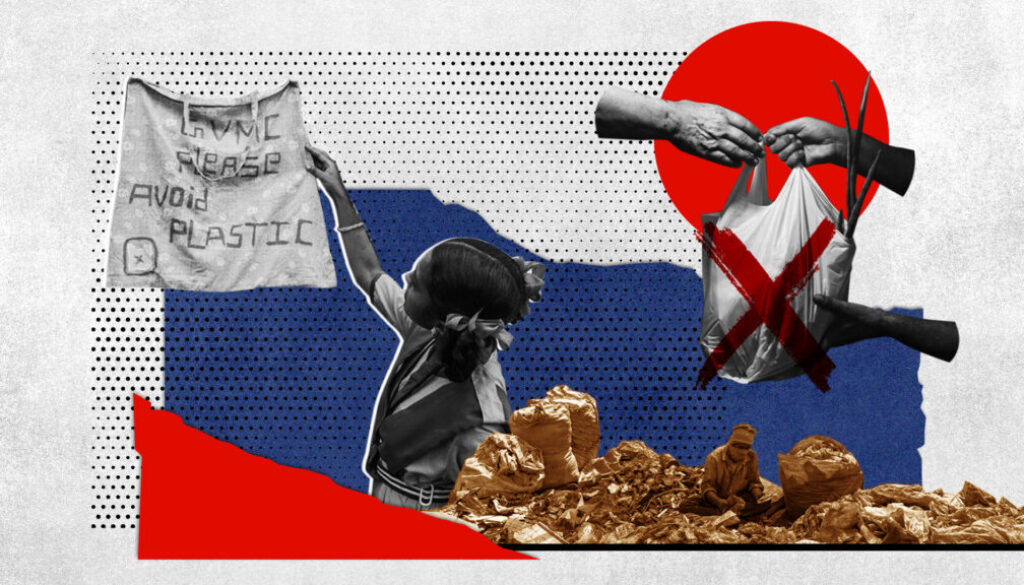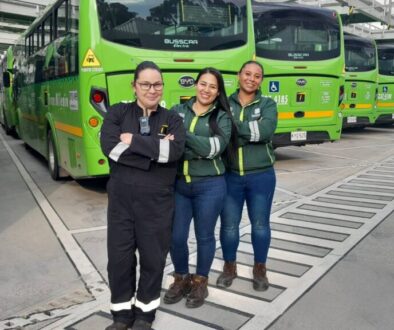What are the results of the move to ban disposable plastic items such as bags and cutlery in India?
Getting your Trinity Audio player ready... |
India, the world’s third largest producer of this type of waste, has banned the manufacture and circulation of 19 products since July. The municipality of Tamil Nadu, with 80 million inhabitants, had done so three years earlier and served as a reference: it reduced the consumption of single-use plastics by two thirds, but there are also many areas where it is difficult to banish them. The keys to achieving this are the commitment of local governments and incentives to change habits.
Bags, disposable plates and cutlery, food trays, cups and bottles, straws… it is hard to imagine daily life without them. According to the United Nations (UN), 1 million plastic bottles are bought every minute and 500 billion bags are used every year, which end up in the earth, rivers and oceans. Therefore, a huge proportion of the waste that can and should be eliminated are single-use plastics. Especially disposable shopping bags, which are not only highly polluting but also very difficult to recycle and reuse. In fact, societies around the world have been making efforts to eliminate them for several years now.
With the ban in force since last July – which covers 19 products that can no longer be manufactured, distributed or sold – India is a pioneer in this type of policy, and not for nothing: this country is one of the three global producers of plastic, along with the United States and China. Three years earlier, the municipality of Tamil Nadu had done so.
India’s high population has a lot to do with the volume of pollution in general and the production of plastics in particular. Tamil Nadu, located in the south, has 80 million inhabitants. Famous for its temples, for its iconic capital Chennai and for the sunsets on its beaches, several years ago it was also facing the drama of plastic misuse and abuse. It was not the first Indian state to focus on plastic reduction, but it was a pioneer in going all out to enforce the law.
The ban on the use of disposable plastics is a measure that cuts across all local economic activities. Although it is estimated that the consumption of plastic bags, for example, has been reduced by two thirds since it came into force, the process is slow because it does not depend solely on the will of the seller, but also on generating new habits among buyers. One of the keys was to focus on the production of low-cost reusable bags, which, in turn, mobilized new economic activity and generated more jobs – for example, for seamstresses – in the region. Both the local government and retailers understood that offering low-cost alternatives to plastic was the key to transforming a new law into a habit.
Another key aspect of the measure’s success is that it was implemented locally. Approaching such a ban from a manageable scale is very important to generate good results.
Ravi Agarwal runs Toxics Link, a waste management NGO. In a recent interview with The New York Times, he explained, “A blanket ban is very difficult to enforce unless local governments crack down on violators and establish a partnership with residents. Otherwise, we’ll end up with a few sporadic fines here and there, and a few newspaper stories.”
In Tamil Nadu, $1.3 million in fines were collected since December 2019. The cheapest is $7. There was social pressure for action: plastic waste permanently clogged drains and sewers. Even so, in street stalls and street markets it is still difficult to eradicate plastic bags.
Tamil Nadu-Buenos Aires
Far, far away from Tamil Nadu, in the City of Buenos Aires, a similar rule is more than five years old. The ban on plastic bags was implemented in the hypermarket, supermarket and self-service sector. The numbers were very positive: between 2012 and 2016 the annual consumption of single-use plastic bags in this sector had been 500 million units per year and since the implementation of the measure, from January 2017 it dropped to zero.
The success of this change has an environmental and infrastructure impact, since millions of these bags used to end up in storm drains and drains. And it also has an additional incalculable value: it showed that it is possible to change habits strongly installed in society. Going to the market with your own reusable bags, separating waste in a domestic way or not asking for more straws when buying a drink are daily behaviors that permeated.
Francisco Sánchez Moreno is General Director of Recycling and Circular Economy of the Government of the City of Buenos Aires and emphasizes the value of cultural change as a driver of any environmental transformation: “With regard to plastics, we have achieved a reduction in the number of bags and straws. As a challenge we have to continue to deepen in plastic circularity measures. This implies increasing the type and quantity of plastic that we recover and that is reinserted in the market”.
In addition to the efficient management of this material, further progress is being made in responsible consumption and in making visible the value of waste as an input in the value chain. This approach is developed jointly through the Circular Economy Network, which brings together more than 300 companies, NGOs and universities to advance green policies hand in hand with the public, with the idea of taking initiatives to the places where people spend most of their time.
Global crisis
Plastic waste pollution is far-reaching and practically irreversible, because once it is scattered, it is very difficult to remove it from circulation. It is estimated that every species in the world has already come into contact with some type of plastic. Moreover, recent studies are beginning to show that plastic pollution goes beyond land and water. It also travels in the air and is capable of reaching places with no human presence. Today there is no corner of the planet where some type of microplastic is not found.
The recent annual report of the United Nations Environment Programme (UNEP) puts the rate of plastic pollution at the level of a global crisis. This report shows that approximately 7 of the 9.2 million tons of cumulative plastic production between 1950 and 2017 became waste, and 75% was discarded and ended up polluting land or water. By 2040, the cumulative volumes in the ocean will triple.
The “good” news is that the same alarming figures are helping to put the problem on the list of priorities for all societies. Experiences such as that of Tamil Nadu show that local wills are as important as the major decisions taken in multilateral organizations such as the United Nations.
Just this year, the United Nations Environment Assembly adopted a resolution by which leaders from 175 countries agreed to draft an international agreement to tackle plastic pollution. It is historic, first and foremost because it will be legally binding and will comprehensively address the entire life cycle of plastic, from its origin to its disposal. It aims to complete the project by 2024. In addition, the UN pledged to work with any government and business interested in moving away from single-use plastics, with a view to mobilizing private finance, enabling investments in research and putting a new circular economy in place.
Inger Andersen, executive director of the Environment Program, called it “the most important multilateral environmental agreement since the Paris Agreement; an insurance policy for this and future generations, so they can live with plastic and not be doomed by it.”
This article is part of the platform Solutions for Latin America, an alliance between INFOBAE and RED/ACCIÓN and was originally published on October 19, 2022 in Infobae.




